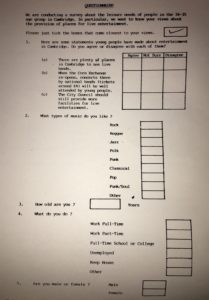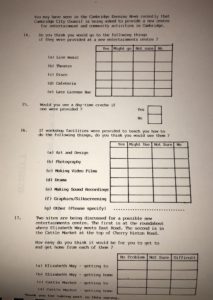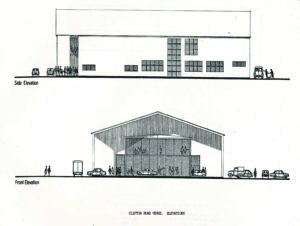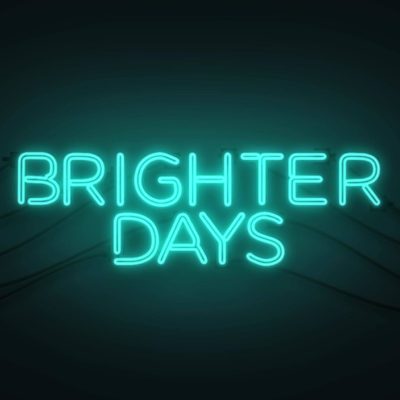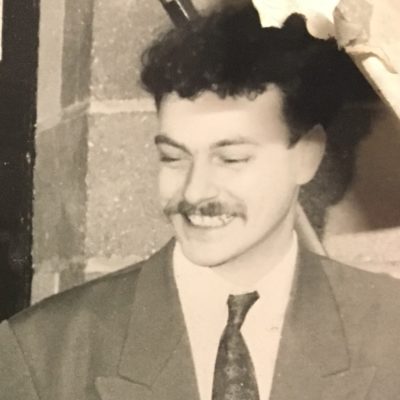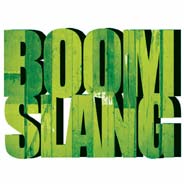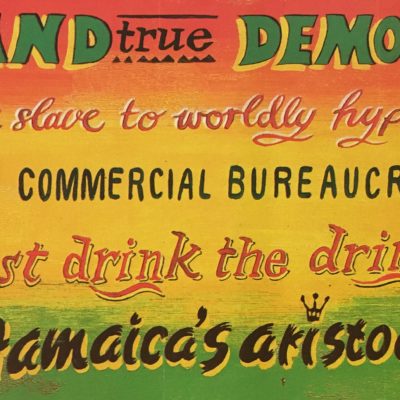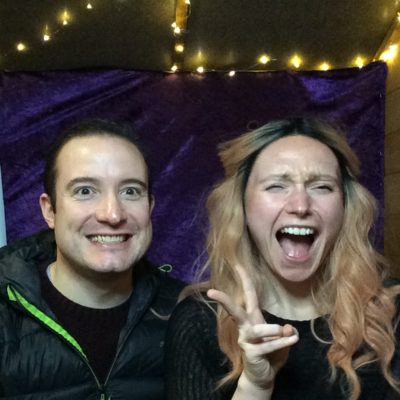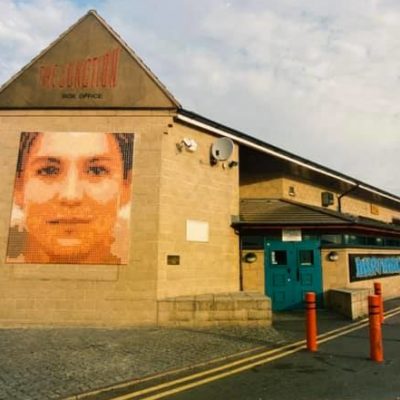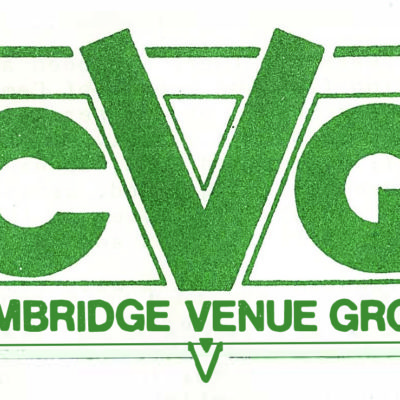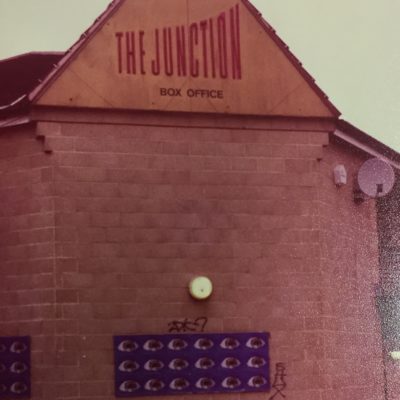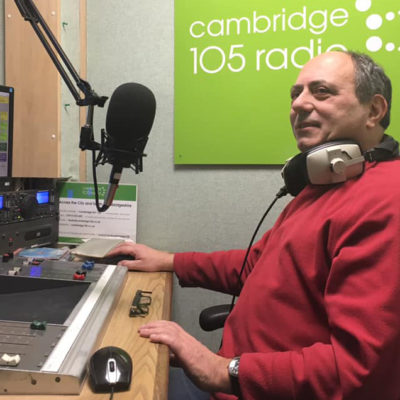Search by topic
- archaeology
- Building of Local Interest
- charity
- church
- crime
- dressmaker
- fire
- Great Eastern Railway
- Listed building
- Mapping Relief
- medieval
- oral history
- poverty
- Public House
- Rattee & Kett
- Religious House
- Roman
- scholar
- school
- Then and Now
- tudor
- women
- work
- world war one
- world war two
Search by text
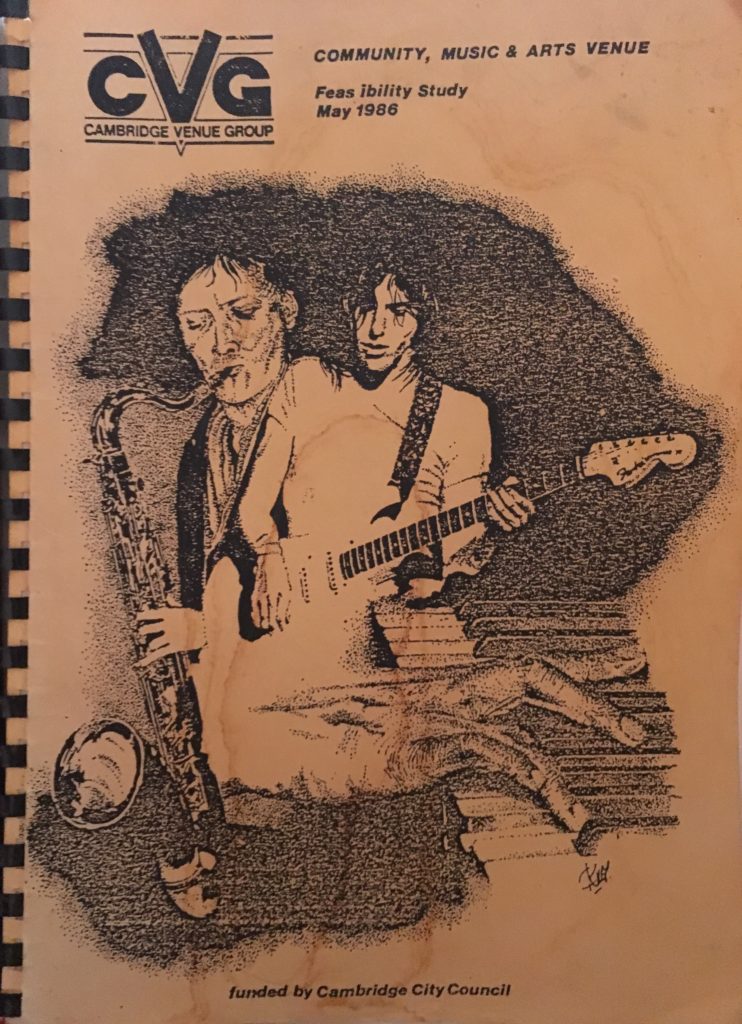 The CVG Feasibility Study produced in 1986.
The CVG Feasibility Study produced in 1986.Knowledge is Power: The Feasibility Study
"When the City Council asked the CVG to produce a feasibility study, I think they really didn't believe that we were capable of such a thing.
They thought that we would all get bored and shy away from doing some actual work, and that it would all fizzle out and be done with.
They couldn’t have been more wrong…”
Peter Ingram of the Cambridge Venue Group recalls:
“Confronted with such a mammoth task, we asked ourselves who might be able to help, and some bright spark (might have been me, might not, cant remember) suggested that we approach a university department with skills in the field of conducting large scale population surveys.
So we did.
I can’t recall exactly which department and who approached them, but a detailed and carefully structured questionnaire emerged. This was taken out onto the streets by a dedicated team, and the results were duly processed to produce an authoritative and unimpeachable report which was subsequently presented to a full CCC meeting in the form of the CVG Feasibility Report. The verdict of the residents of Cambridge was a definite and emphatic ‘yes we want this!’.”
Whilst the study was being conducted the question of ‘where’ was being argued within the bowels of the council. I had personally long argued that the Cattle Market site would be perfect for two main reasons. Firstly it was a large empty site that would give the venue plenty of potential for expansion, and secondly, it was only a hop and skip from the M11, allowing new up and coming bands from London and elsewhere easy access to the new venue on their nationwide tours. It was also a long way away from residential areas, and so this would be not be a problem for local residents (or so I thought). Last but not least, it was land owned by the city council. My main concern with this site was its proximity to the high tension power lines for the nearby railway line, thinking that there might be problems with electrical interference with sensitive sound equipment, especially given our hope that there would be media production facilities – sound recording, video production etc; even a community radio station within the new venue (as in turned out this idea was heresy within BBC Local Radio circles and marked the end of my promising new radio career….ho hum). We even had aspirations to connect the new venue to the expanding fibre optic infrastructure being pioneered in Cambridge as part of the high tech revolution, allowing us to broadcast events to the world!
The alternative to the Cattle Market site was to utilise the sunken
space within the Elizabeth Way Roundabout. This was popular with some members of the CVG as it was more central, and it was argued that noise reduction would be less of a problem as the area was mainly below ground level. I personally had serious doubts about the feasibility of this site due to the potential for the traffic noise problems interfering with recording equipment etc, as well as accessibility issues for larger bands and their equipment trucks etc. I was also aware that there might be potential for those opposed to the CVG campaign to promote this site as a red herring in order to derail the project entirely, or as a prelude to further development of the proposed East Road dual carriageway scheme which was then a highly contested issue with local residents.
Entirely coincidentally, and being a curious sort of chap, I had recently attended one of the Universities excellent open lectures. The subject of the lecture was lead pollution from car exhaust gases and its detrimental effect on the development of young brains. I happened also at the time to be in a relationship with the mother of a small child attending the St Mathews Primary School on Norfolk St, behind the Thakes Bike Shop and only a few metres from the proposed new highway along (or possibly over!) East Rd. Amongst her friends and fellow St Mathews mothers was a highly intelligent and politically active woman by the of Nicky. She was more than a little concerned about the proposed highway development right next to her child’s school playground and so was particularly interested in what I told her of this new research into the damaging affects of lead pollution.
Soon afterwards the proposed ‘Magic Roundabout’ venue site, as well as the entirety of the plans to build a massive highway straight into the middle of town, were quietly dropped. You might say that a potential health disaster in the centre of Cambridge was prevented by mum power……with a little help from our knowledgable friends within the University of Cambridge of course.”
Peter Ingram
John Clements and Paul Christoforou discussing the Feasibility Study, recorded at the Museum of Cambridge, January 2020.
“We had to survey addresses in hundreds of streets around the city, knocking on doors and getting people to answer set questions. The target number of completed questionnaires was reached (in the thousands!) and this was submitted to the council. I think that it was at this point that the council realised they had a serious campaign confronting them rather than just dismissing us with what they thought was a near-impossible task. And so the pressure campaigning continued with regular CVG meetings, regular meetings with the council (officers and councillors).”
Jem Linsey
FEASIBILITY STUDY INTRODUCTION:
“There has been an almost total lack of provision for live entertainment0in Cambridge for many years. In a city which
to many people is synonymous with artistic and academic excellence and creative endeavour, this is a very serious situation. There is no shortage of local musical, theatrical and artistic talent, and no shortage of appreciative audiences, but the longterm lack of provision of a suitable venue for live entertainment and community activities to act as a focus for music and the arts has served to fragment and demoralise the local community of musicians, performers, creative artists, and all those who enjoy live entertainment. Many attempts to establish regular live entertainment venues in pubs and halls around the city have failed due to inadequate sound insulation or too close proximity to residential accommodation. Those that survive seem to do so precariously, and are in any case very small. The events of November and December 1985 served to bring the widespread frustration felt by a large section of the community to.the attention of the City Council. Council Leader Chris Howard committed himself to the establishment of a new venue for music and live entertainment in the city, and Councillors and Council O?ficers were able to hear the views of the people on this subject at a number of open meetings.
A proposal was worked up by Council Officers for the conversion of an industrial unit on the Clifton Industrial Estate at the Cattle Market, Cherry Hinton (JDC AAA 7.3,86). The City Council then awarded a grant to the Cambridge Venue Group to carry out a Feasibility Study on this site and on the Elizabeth Way Roundabout site.”
SUMMARY AND CONCLUSIONS:
“This report from the Cambridge Venue Group itemises the Group’s realistic proposals for the establishment of a new centre for live entertainment and community activities in Cambridge. It demonstrates the need for, and the demand for such a venue, and outlines the potential that the scheme possesses for filling the gaps in current provision and for combining a winning selection of;interconnected cultural, social, and community activities under one roof, It shows the employment creation aspects of the proposal, and demonstrates that the venue could be self-financing, as other similar venues elsewhere in the UK are, given the support of the community and its representatives, and a one-off capital commitment to establish it. It identifies the aspects of the proposal which need further research, and invites all interested bodies and individuals to combine to make a constructive partnership to ensure that the venue is established ·quickly and successfully as a longterm investment in the social and cultural life of the City of Cambridge.”
Jem Linsey and Lyn Disley of The Cambridge Venue Group in conversation about The Feasibility Study (recorded January 2020):
DOWNLOAD PDF: Summary and Conclussion chapter of the CVG Feasibility Report May 1986
‘Lost Nights and Love Songs’ is a Heritage Lottery funded project celebrating 30 years of The Cambridge Junction. www.junction.co.uk/lost-nights
Contribute
Do you have any information about the people or places in this article? If so, then please let us know using the Contact page or by emailing capturingcambridge@
License
This work is licensed under CC BY-NC-SA 4.0





